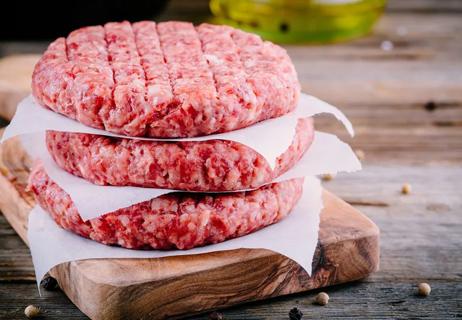Once perishable food hits the table, it’s typically good for about two hours

Burgers hot off the grill. Your grandmother’s famous potato salad. Trays of cut-up fruit. Plates aren’t large enough to handle all the yummy food at summertime cookouts. Everything is so tasty.
Advertisement
Cleveland Clinic is a non-profit academic medical center. Advertising on our site helps support our mission. We do not endorse non-Cleveland Clinic products or services. Policy
But as good as all that food may be, if the spread has been sitting out, resist the urge to come back for seconds hours later or pack up leftovers, says registered dietitian Beth Czerwony, RD, LD.
The reason why can be summed up in two words: foodborne illness. Here’s what you need to know to leave your next cookout with good memories instead of intestinal distress.
A cookout may not seem like the setting to contemplate microbiology, but it’s essential to understand how long certain foods can sit out before they become hazardous material for your insides.
Bacteria grow rapidly on food left in the temperature “danger zone” between 40 degrees Fahrenheit (4 degrees Celsius) and 140 F (40 C). In fact, the bacteria count can double in as little as 20 minutes.
“It doesn’t take long for perishable food ― things like meat, dairy or mayo-based products ― to become a potential problem if it’s left out on a table,” says Czerwony.
Food safety experts say perishable food shouldn’t be eaten once it’s been unrefrigerated for more than two hours. If the temperature is above 90 F (32 C), perishable food becomes dicey to eat within an hour.
Nobody wants to throw out large amounts of food from a party. To keep the waste factor low, Czerwony offers these recommendations:
Advertisement
Foodborne illness is as unpleasant as it sounds. Common symptoms include diarrhea, nausea, stomach pain, headache and an overall icky feeling, says Czerwony. This internal distress can hit hard and fast, too.
The U.S. Centers for Disease Control and Prevention (CDC) estimates that 48 million people in the United States get food poisoning every year. Extreme cases can lead to hospitalization or even death.
If you’re tempted to pack leftovers for later, look closely at any food before eating it. “Use your senses,” advises Czerwony. “If it doesn’t look right or smell right, it probably shouldn’t be on your plate.”
Overall, she offers three words of advice on what to do with prepared food left on the table at the end of a summer cookout: Throw it away.
“It’s not worth the risk,” she emphasizes. “Even if you’ve done a good job keeping the food warm enough or cool enough during the party, odds are there’s been bacteria growth. That’s just the reality.”
Bottom line? “Don’t take a chance on a leftover burger,” she says. “Leave it for the raccoons.”
Advertisement
Learn more about our editorial process.
Advertisement

Leftovers can be kept in the fridge for three to four days or frozen for three to four months

Ultimately, rice is safe to eat, but the type, where it’s grown and how you cook it may be factors to consider

Washing your hands, thoroughly cleaning kitchen tools and preparing meat separately can reduce the risk of foodborne illness

Extended outages lasting more than four hours can make food in your fridge unsafe to eat

Microwaves use non-ionizing radiation and haven’t been shown to cause cancer — follow food safety practices and use microwave-safe containers

Color, texture, smell and expiration date all hold important clues

No! Be sure to put your leftovers in the fridge

Not all processed foods are bad, but the fewer the ingredients, the better

The best parenting style balances enforcing rules and showing plenty of love

Tips include cutting back on sugar, focusing on exercise and managing stress

It can be harder to let go when you’ve invested time, energy and emotions — but it might be the healthier choice long term